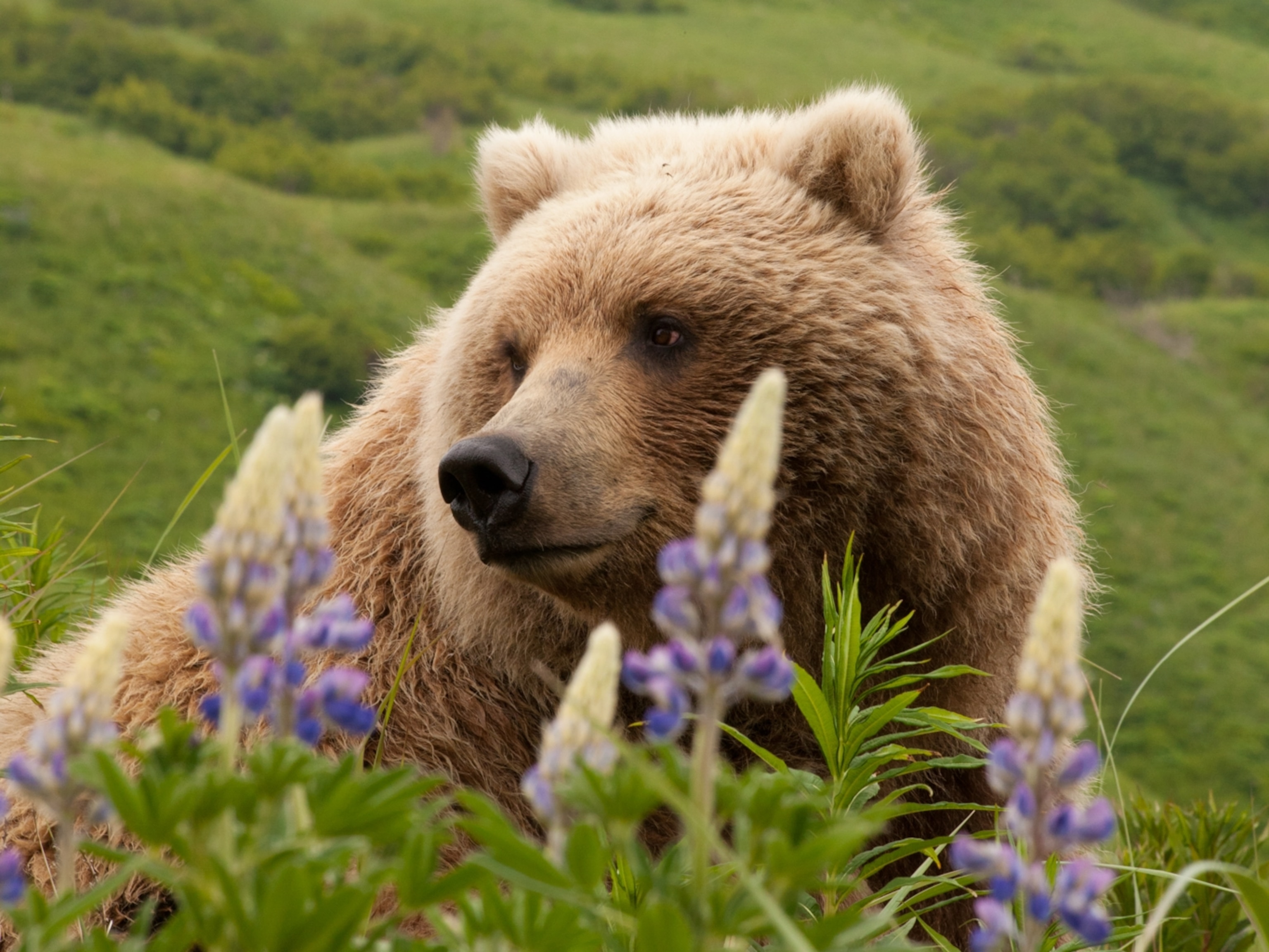Watch Mother Bear Rush to Save Her Cubs From a Waterfall
Bear cubs face many risks—including learning how to navigate the rapids of Alaska's Brooks River.
It’s a scene every mother hopes to avoid—watching not one, not two, but three of your offspring get swept up in a river’s rapids and washed over a waterfall.
But this is exactly what happened to a brown bear near Alaska's Brooks Lodge in August 2016, an incident captured in a recently released video.
Alaska's brown bears are no strangers to the water: They spend much of the summer and fall standing in the chilly flow, trying to nab salmon as they swim upriver to spawn.
But navigating slippery rocks and swift rapids takes practice, says Troy Hamon, chief of Resource Management and Science for Katmai National Park and Preserve, where the video was filmed.
“Bears aren’t born knowing how to swim or negotiate the water,” says Hamon, who estimates that the cubs in the video are no older than two. (See beautiful pictures of Alaska's brown bears.)
“It’s a learned skill, and quite often we get to watch part of the learning process.”
Mothers coach their young how to fish, and slip-ups like the one in the video are likely common; even so, mom didn't waste any time splashing over to check on her cubs. The term "mama bear" was coined for a reason—bears are notoriously protective mothers.
Can Bears Drown?
All three of the bear cubs in the video—recorded by an Explore.org livestream camera—seem to make it over the approximately six-foot waterfall and swim to shore, albeit after a likely scary ride.
This section of the Brooks River is generally shallow and slow enough for the cubs to swim to safety.
Wayne Kasworm, a wildlife biologist with the U.S. Fish and Wildlife Service’s Grizzly Bear Recovery Office, says he’s never come across a report of a bear cub drowning. (The grizzly bear is a subspecies of the brown bear.)
But that doesn't mean it hasn't happened.
"I do not doubt that in the spring of the year when cubs are small and rivers or creeks are high with meltwater, that cubs could be swept away and drown while the mother is crossing the river or creek,” he says.
Hamon agrees. A few years ago, a visitor reported that a bear cub had been poached in the park’s backcountry. When Hamon flew out to the site to investigate, he realized the cub had no signs of bullet wounds, but it did have bite marks that looked like they came from another bear.
Adult male brown bears are known to kill cubs so that their mothers are ready to mate again, but closer inspection revealed that these bite marks had happened after the cub had died. (Also watch an exclusive video of a polar bear cannibalizing a cub.)
Might the bear have drowned?
Unfortunately, the necropsy was only performed to see if the bear had been poached, so they couldn’t identify drowning as the cause of death.
Brutal Childhood
“The end result is you have situations like that,” says Hamon. “You don’t have any actual way to tie it to a drowning. But we couldn’t tie it to anything else either. It’s just one of those things that makes you shake your head.” (See more pictures of bear cubs.)
The first few years of a cub's life are generally very risky, and many die before reaching adulthood, Kasworm adds. For instance, a radio-collared mother bear often is seen with several cubs at one sighting and none at the next.





